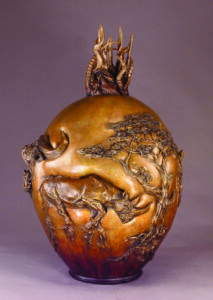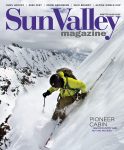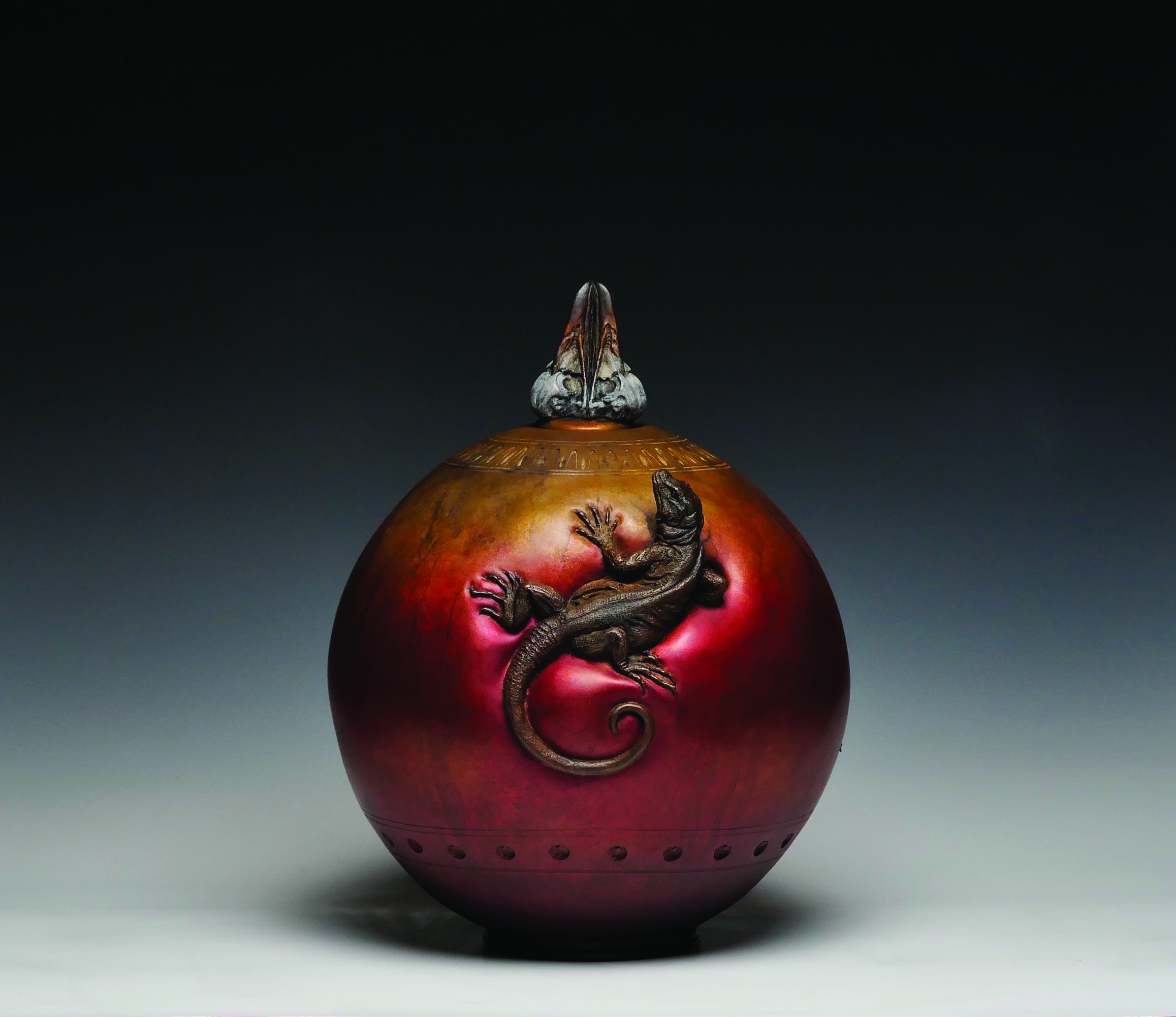Connecting art and nature has never been a reach for Dave LaMure. If anything, the Idaho-based sculptor feels it would be more difficult to ignore how nature plays a role in art.
His sculptures and vessels featuring wildlife are currently on display at the Kneeland Gallery in Ketchum, a well-placed exhibit in the town some call a gateway to the Sawtooth wilderness. With every detail intentionally chosen, the animals are formed on these vessels in a process called “bas relief.”
LaMure cuts spaces out of surrounding material and manipulates the vessel from the inside so that an image stands out slightly. Coins with figures on them are great examples of this incredibly intensive process where 3-dimensional images are made with limited vertical space. This gives a unique impression on clay vessels that the figures on the vases spring right from the clay. It also allows LaMure to smoothly fade his artwork into the pots, helping to symbolize their connection to their surroundings.
The artist’s career began when LaMure’s uncle brought clay to the family’s kitchen table. From that small amount of clay, a young LaMure crafted a clay owl with a wizard hat on. The artist looks back fondly on this first project, attributing the choice to an unconscious knowledge of the wisdom of nature, the driving force behind LaMure’s art even now. He also spent countless days in the Roswell Museum in Roswell, N.M., admiring large ancient pottery and utilizing the pottery studio to develop his technical skills and further his love of ceramic work.
While developing his skills, LaMure also fine-tuned his purpose for creating work. He creates art that represents our collective consciousness and expresses the wisdom and rhythm of the natural world. “People are an integral part of nature, there’s a feeling of separation sometimes, but we are learning through our own doing that all life is intimately connected,” say LaMure. He says to think of “Uni-verse,” meaning one song. There’s a rhythm of the natural world; when people work in tandem with nature, true harmony comes from it. He explains that people feel peace when they see nature. Art can imitate that feeling through similar proportions and repeating designs. This explains why someone can enjoy art without knowing exactly why art resonates with the natural world.
 For LaMure, the entire process of creating work gives him the feeling of being in touch with nature. His vessels begin as wheel-thrown pottery, and each piece takes around 8-12 months to create into bronze. LaMure sculpts his work from the inside out, constantly molding and shaping the vessels to life. When the clay vessels are done, LaMure bisque fires his work to prepare for the bronze foundering process. Each vessel is also hollow with leather tethers hanging inside.
For LaMure, the entire process of creating work gives him the feeling of being in touch with nature. His vessels begin as wheel-thrown pottery, and each piece takes around 8-12 months to create into bronze. LaMure sculpts his work from the inside out, constantly molding and shaping the vessels to life. When the clay vessels are done, LaMure bisque fires his work to prepare for the bronze foundering process. Each vessel is also hollow with leather tethers hanging inside.
“We are tethered to what we love and tethered to our experiences, and that makes up that intangible space,” says LaMure. The empty pot represents the empty space that is our perspective, with the tethers representing experiences and passions we look to when we want to find direction. The lids are also uniquely designed for each vessel. The lid on the “Nine Muses” is sculpted into horse hooves in the composition of running. This piece specifically is dedicated to LaMure’s sister, one of his muses, and his experience slowly breaking horses, a gentle process that centers around establishing relationships with horses to slowly get them accustomed. He explains that everyone has muses in their lives that inspire them to create and live with intention.
LaMure’s “Native” bronze sculpture now sits outside the Kneeland Gallery and came about when a gallery owner in Pagosa Springs, Colorado, wanted a piece done to honor her late husband’s passion for trout fishing. LaMure hesitated at first, but after learning more about the presence of cutthroat trout in our rivers, he became entranced and produced a piece that represents what the fish look like in their natural habitat. LaMure, a longtime river runner and guide, advocates strongly for land preservation and cites Theodore Roosevelt as an inspiration because of his forward-thinking policies that resulted in countless national parks and protected wilderness areas today. Roosevelt stated, “Wild creatures are not merely the property of people today but of unborn generations.” His artwork resonates strongly with the idea of preserving nature for the next generations.
These bronze vessels are a gentle reminder for art and nature enthusiasts alike that mankind and nature are intimately connected. Unsurprisingly, someone with an unbridled passion for the outdoors could bring energy to his sculptures the way LaMure has. He lives close to this quote from Frank Loyd Wright: “Study nature, love nature, stay close to nature. It will never fail you.”


